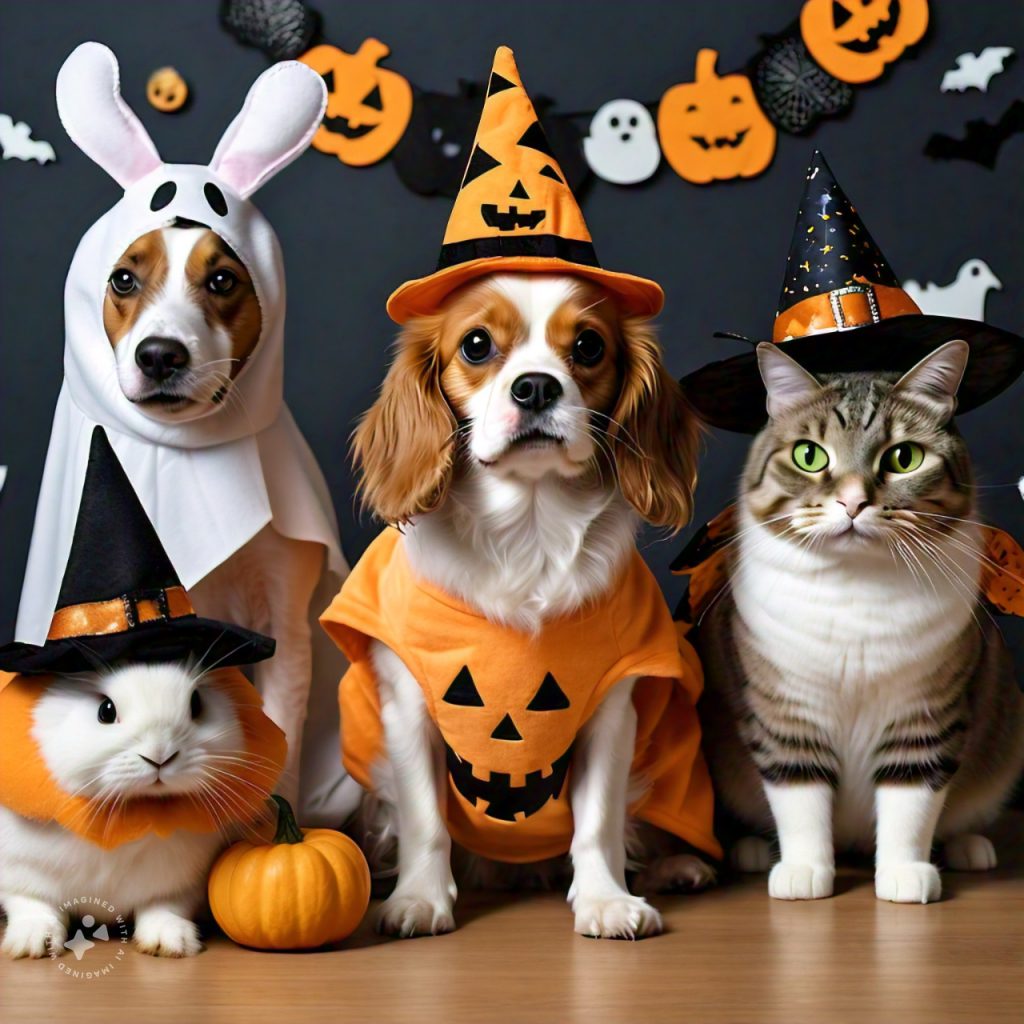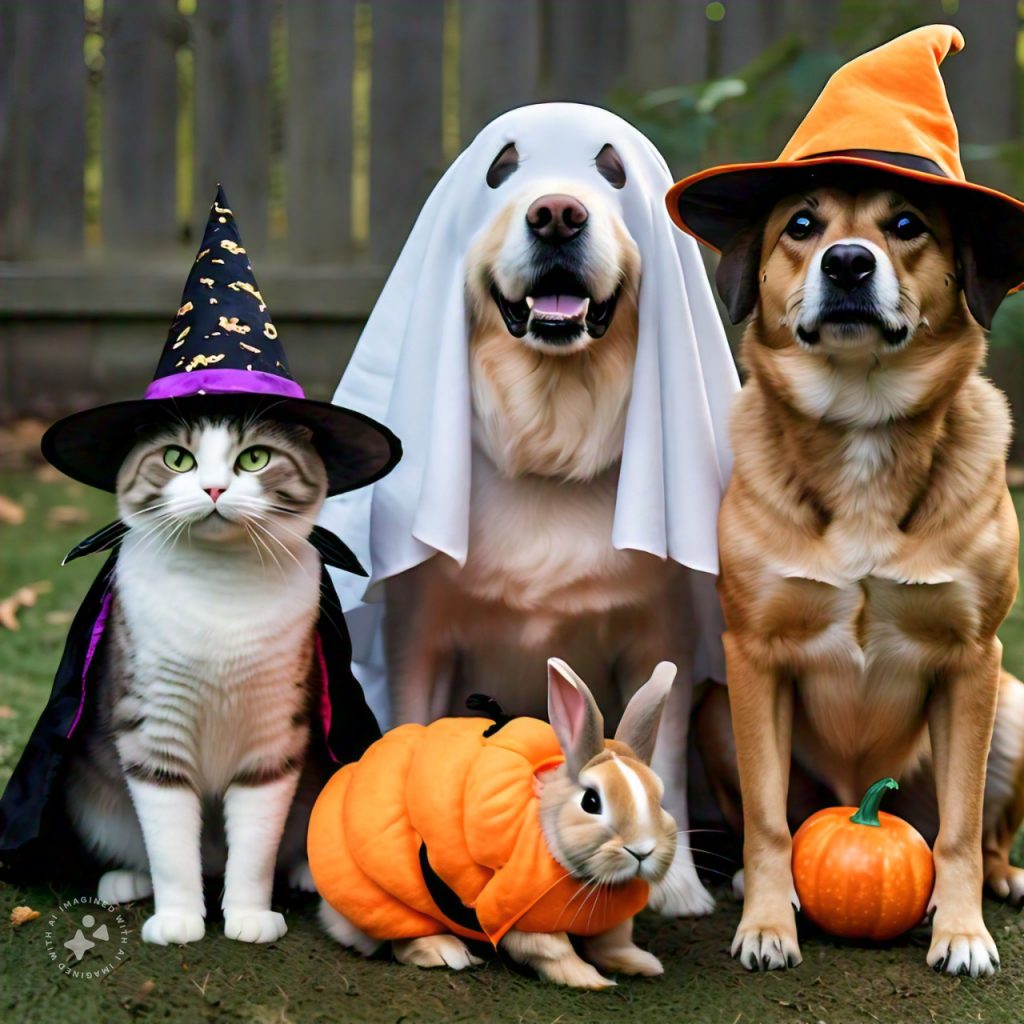Halloween is a time of excitement for pet owners who love dressing up their furry friends. While adorable pet costumes are available everywhere, pet owners must prioritize safety to keep their pets comfortable and protected during this festive season. Here’s a comprehensive guide on the most important safety considerations for choosing Halloween costumes for pets, from fabric choices to sizing and beyond.
1. Choosing the Right Material: Comfort First
Costume material plays a big role in pet safety and comfort. Here’s what to look for:
- Breathable Fabrics: Costumes made from lightweight, breathable materials such as cotton, linen, or soft mesh are generally safer. These fabrics allow air circulation, reducing the chances of overheating.
- Non-toxic and Hypoallergenic: Since pets may chew on their costumes, the material should be non-toxic. Hypoallergenic fabrics are essential for pets with sensitive skin or allergies.
- Avoid Heavy or Itchy Materials: Heavier fabrics or those with sequins, metallic threads, or other decorations can cause irritation and discomfort. Opt for soft, non-abrasive materials to prevent skin rashes or itchiness.
2. Size and Fit: Preventing Restricted Movement
A well-fitting costume is vital for a pet’s mobility and comfort. Here’s how to ensure the costume fits properly:
- Measure Carefully: Use a measuring tape to measure your pet’s neck, chest, and back length. Most pet costumes provide size charts to match measurements with appropriate sizes.
- Avoid Tight Clothing: Tight costumes can restrict movement, impair breathing, and cause stress. Costumes should be snug enough not to slide off but loose enough for your pet to move freely.
- Opt for Simple, Lightweight Designs: Heavier costumes with numerous layers or bulky designs may cause overheating and limit your pet’s movement. Minimalist, lightweight costumes are often the safest and most comfortable choice.
3. Check for Choking Hazards
Many pet costumes come with small embellishments, buttons, or attachments that could pose choking risks:
- Secure Any Small Parts: Check for buttons, bells, or dangling accessories that a pet might chew off and swallow. If you cannot remove these accessories, secure them tightly or choose a costume without them.
- Avoid Loose Threads or Edges: Pets, especially younger ones, tend to chew on loose strings, which can lead to choking or intestinal blockages. Inspect the costume for any loose threads and trim or secure them.
- Watch Out for Velcro Straps: While Velcro can provide adjustable fittings, some pets find it tempting to chew on. Opt for snaps or zippers if your pet has a tendency to gnaw on Velcro.
4. Visibility and Supervision: Keeping Your Pet in Sight
Pets in costumes need close monitoring, especially when outside, as costumes can reduce their visibility and create potential hazards.
- Bright or Reflective Costumes: If you plan to take your pet out after dark, consider a costume with reflective elements to improve visibility. Adding a reflective leash or collar can enhance safety.
- Always Supervise Costumed Pets: Pets should never be left unattended while in costume. Supervision allows you to detect signs of discomfort, overheating, or stress early on.
- Leash Training and Control: Even well-behaved pets can become stressed and try to escape or hide while in costume. Keep pets leashed outdoors and ensure their collar or harness is securely attached.
5. Signs of Discomfort and Stress
Pets are often unaccustomed to wearing clothes, so costumes can cause discomfort or stress. Here’s how to recognize the signs:
- Body Language: Watch for signs like excessive scratching, rubbing, or shaking. Flattened ears, tail-tucking, or attempts to paw at the costume can indicate discomfort.
- Behavioral Changes: If your pet seems overly anxious, lethargic, or suddenly avoids interacting, it’s time to remove the costume.
- Panting or Overheating: Excessive panting, even in mild weather, can signal overheating. Remove the costume immediately and offer your pet water.
6. Functional Costumes for Safety and Comfort
Opting for functional, minimal costumes or accessories can provide a safer experience without compromising on the Halloween spirit.
- Simple Accessories Instead of Full Costumes: Some pets feel more comfortable with simpler accessories, like a Halloween-themed collar or bandana, rather than a full-body costume.
- Consider Headgear Carefully: Headgear and hats can obstruct your pet’s vision, making it hard for them to navigate or recognize their surroundings. Only choose headgear that doesn’t restrict their vision or senses.
- Prioritize Safety over Style: While intricate designs are cute, simpler costumes are often safer. Look for easy-to-wear, functional costumes designed with safety and pet comfort in mind.
7. Adapt Costumes for Specific Pet Breeds and Types
Each pet has unique physical characteristics, so consider these adaptations based on common pet types:
- Cats: Many cats feel stressed in costumes due to their preference for freedom of movement. Simple capes or collars can often be enough.
- Short-Nosed Breeds: Breeds like Bulldogs and Pugs may have respiratory difficulties. Avoid costumes that cover their faces or obstruct breathing.
- Small Pets (like Rabbits or Ferrets): If you dress smaller pets, use minimal, lightweight accessories and ensure they can easily remove them if stressed.
8. Costume Test Run: Familiarizing Your Pet
Giving your pet a trial run in the costume is beneficial for both of you:
- Introduce the Costume Slowly: Let your pet sniff and inspect the costume before dressing them. Reward with treats to create a positive association.
- Practice Wearing the Costume: Dress your pet in the costume briefly each day leading up to Halloween. This allows them to adjust gradually to the sensation.
- Monitor and Modify: During each test run, watch for signs of distress and make any adjustments to improve comfort and safety.
9. Alternatives to Full Costumes
If your pet isn’t comfortable with a full costume, try these safer alternatives:
- Halloween-Themed Bandanas: Bandanas are a low-stress way to dress up pets and can be easily removed.
- Customizable Collars: Halloween collars with fun prints or small, attached charms can add festivity without causing discomfort.
- Pet-Friendly, Non-toxic Face Paint: Some pet-safe face paints can add a Halloween look without needing a full costume. Just be sure to choose non-toxic, hypoallergenic options specifically designed for animals.



Halloween can be a fun and safe time for pets with careful planning and attention to detail. Always keep your pet’s comfort, safety, and stress levels in mind when choosing or designing a costume. Remember, the goal is to enjoy Halloween without compromising your pet’s well-being. By following these safety tips, you can help your pet join in the Halloween festivities while staying happy, healthy, and secure.

